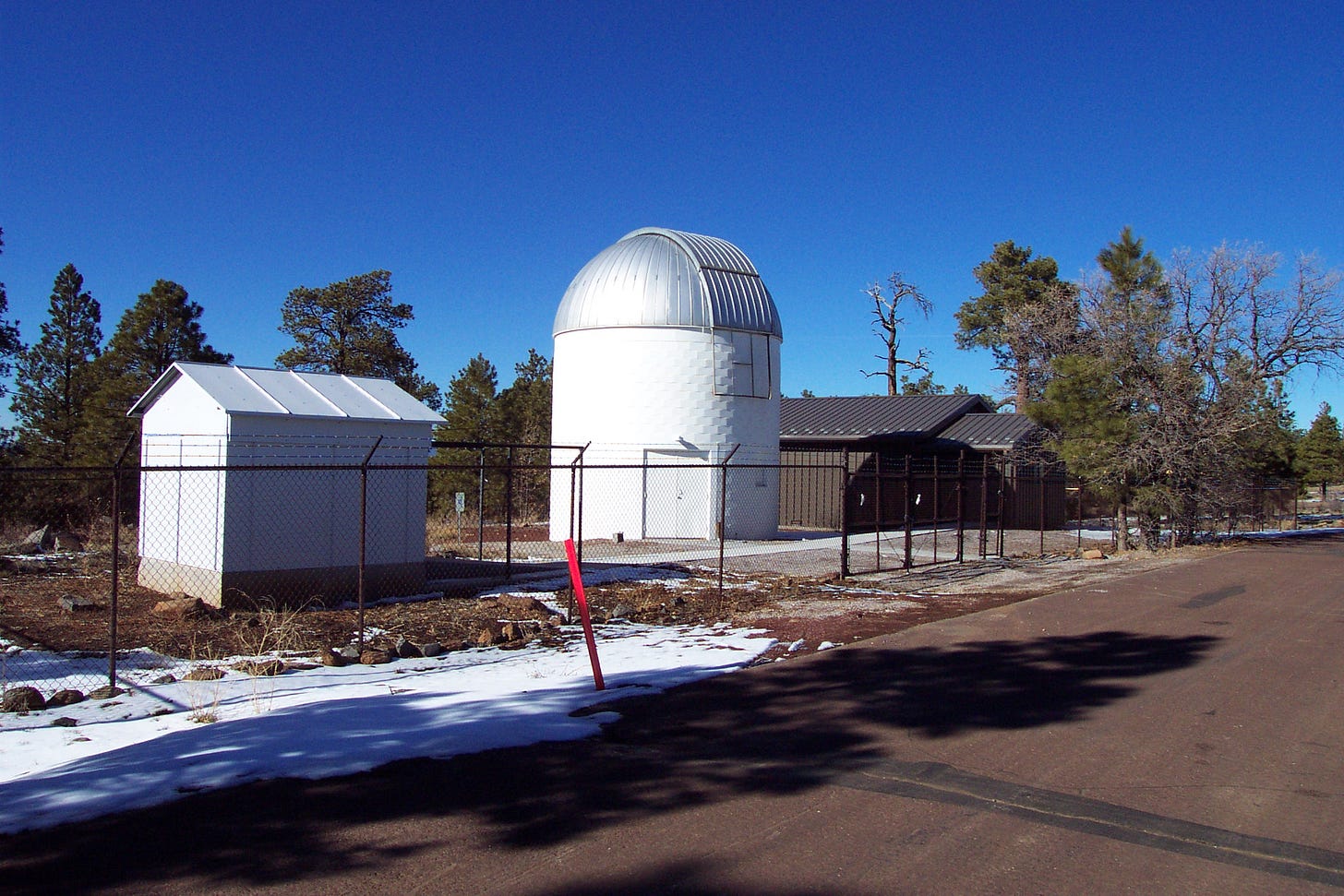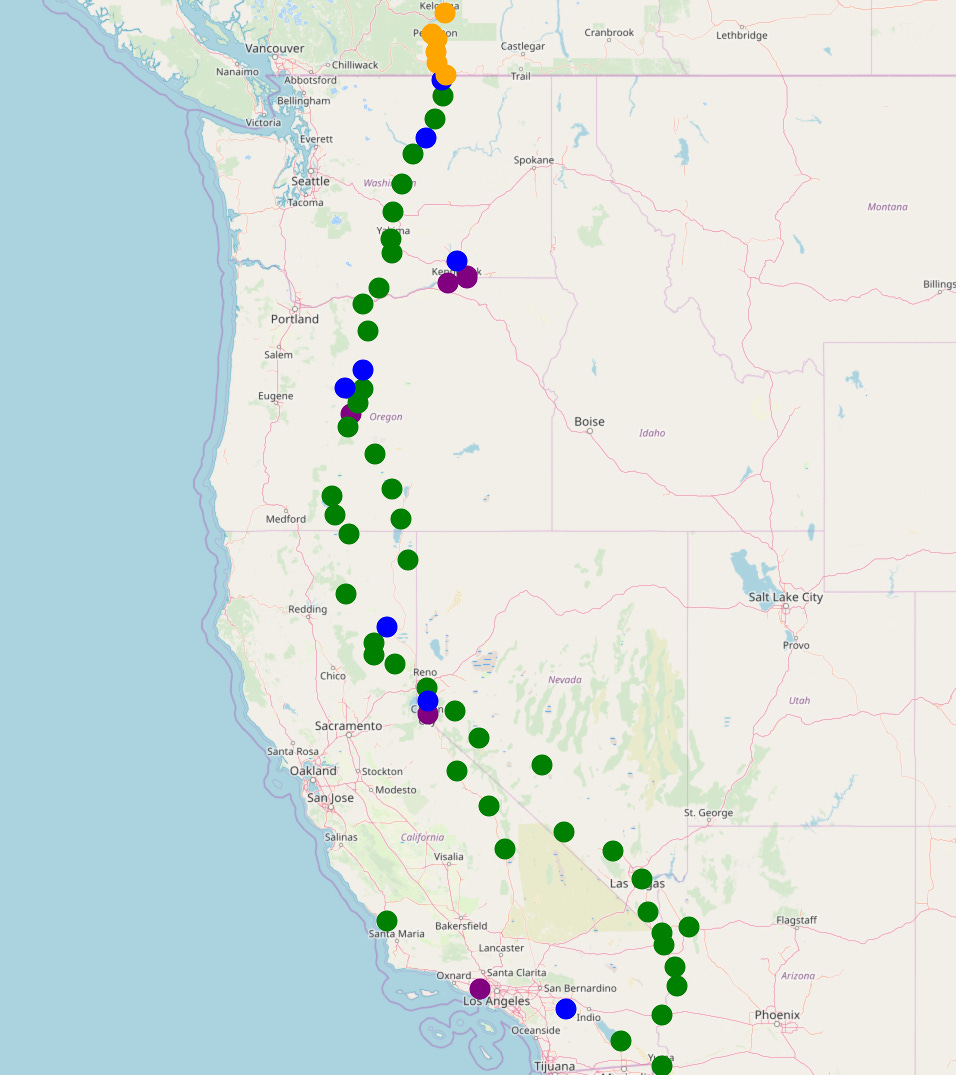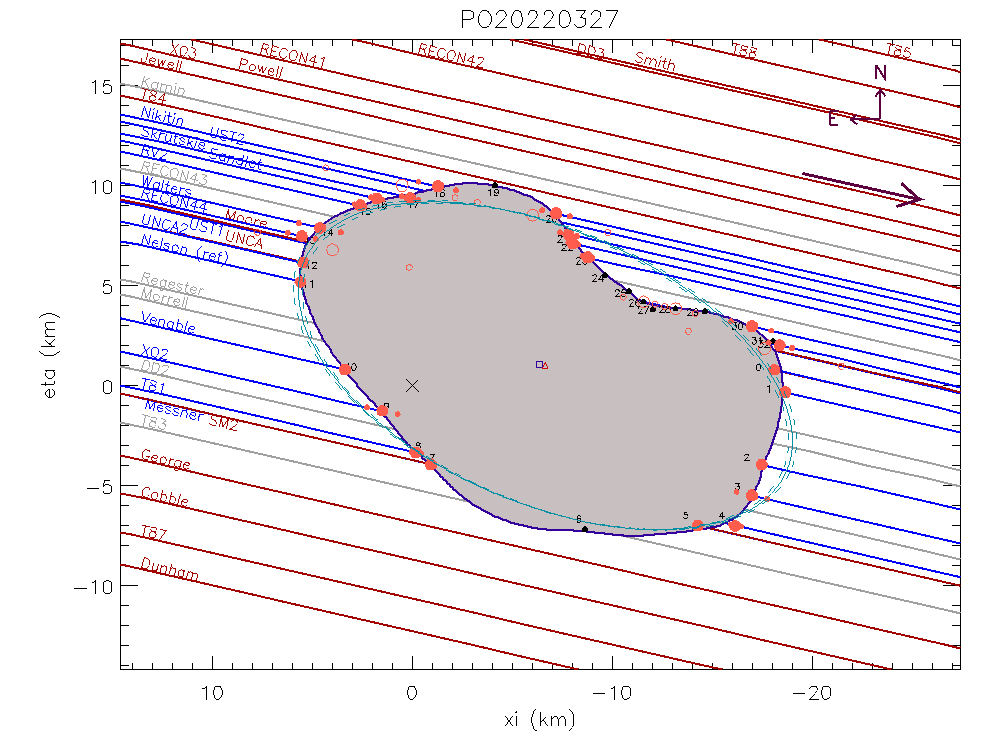In 2012, RECON was born. The idea for the Research and Education Collaborative Occultation Network grew from a pivotal moment in 2001. Some people buy a flashy car when they hit their 40s, but that’s not my style. Instead, I bought my first telescope.
In my career, I have worked with many telescopes, big and small. I had one year when I logged close to 250 nights on a telescope, mostly at Lowell Observatory. You might think I would have been satisfied, but the desire to have my own telescope, even if much smaller, had become a persistent distraction.

On that fateful day in 2001, I was driving from Flagstaff to Kitt Peak to begin a series of nights on the Mayall 4-meter telescope in search of Kuiper Belt Objects (KBOs), those newly realized tiny worlds out beyond Pluto. It was a slight detour in Tucson to visit Starizona, a wonderful shop that sells telescopes and all the goodies that come with such a hobby.

That evening, Starizona was hosting their usual observing session outside the store, a very shrewd strategy for a store that wants to sell telescopes. In the dark, I met Dean Koenig, who listened to my story and recommended a Celestron NexStar 11 plus some very nice eyepieces. This connection has continued for decades and Dean has been very important in my pursuit of occultations.

This telescope was of the new variety coming out that provided computer controlled operation. The setup was incredibly easy compared to its predecessors. My first reaction after using it myself was to realize that this was the type of system anyone could learn to use.
Not long after, a vision came to me of a network of telescopes that could observe occultations with no travel required. These systems needed to be spaced out and schools seemed like a good option. It took over 10 years to build a solid plan and get the funding.

The first project RECON worked on was a study of KBOs. I will write more about this earlier phase of this successful project. This story is about our new project.In 2021, the Lucy spacecraft embarked from Florida on its journey to explore Júpiter Trojan asteroids. It will visit five prime targets, one of which was the subject of a previous article. To visit so many objects is quite remarkable. Many missions are content to explore one, maybe two objects. How much can we learn about the millions of similar objects by looking at just five?

RECON has just received new funding from NASA to conduct a wider study of this population of objects. For the next three years, we will conduct occultation observations of Jupiter Trojans. Our primary goals are to measure sizes and shapes. Along the way, we will also search for moons and contact binaries. The diversity of their shapes provides important clues that tell us more about how the solar system formed. These are all nearly the same goals as for Lucy. We certainly won’t get pictures like Lucy can, but the larger sample of bodies will provide a larger context to better understand what the mission will provide.
The RECON plan is based on the 2000 biggest Jupiter Trojans. I searched this list of objects for occultations over the next three years, and found 6,634 such opportunities. Actually, there are even more, but I only kept those that cross regions in the world that have clear skies and people that are interested in such things. Of these events, 463 cross somewhere over the RECON stations. That is an average rate of 13 events per month.
Our RECON teams are pretty amazing — teachers, students, community members, amateur astronomers all combining to collect occultation data. There is a limit to how much these busy people can do. For this project, we only need a small fraction of the teams to observe for each event. In the end, each team will contribute only once or twice per month. This is a rate of observing that they have been sustaining for more than a decade.
The overall strategy works like this: we want three occultations per object. The first event will have the worst prediction, requiring more stations to cover the uncertainty region. We might only get one or two chords at first, but those data will provide an accurate position of where the asteroid was. With that position, the next prediction is more accurate. From the second event, we will see a higher resolution shape as well as yet another position. From the third event, we will get our best view of the shape and a third position.
The shape that we see is the easiest result to understand. In the past, it was common to expect asteroids to be mostly round. Sometimes, there might be enough data to suggest the shape is slightly elliptical. With the explosion of new high-quality occultation data, a circular or elliptical shape is the last thing we should expect. By the third event, we know if the object is highly flattened or if it’s a contact binary. This was the case for Arrokoth, the New Horizons’ extended mission target. It is both flattened and a binary. The binarity was discovered with occultations, but the flattening was seen thanks to New Horizons.
Another outcome we expect is to see is two separated objects. We don’t really know how likely this is, but over the next few years, we expect to find at least a few. If we don’t, that will be an important result. The frequency of binary objects is a key science objective best addressed with occultations.
Some binary objects are widely spaced enough that we might only see only see one component. We could ask more people to observe and thus cast a wider net, but that is a very inefficient way to proceed. The three positional measurements we collect can reveal an unseen body. If there is just one body, the positions will all agree with the orbit. A second body will cause the first one to appear to wobble relative to the orbit. If we see large errors in the positions, it will point to the existence of a wider binary. Perhaps later, someone might want to followup with a later occultation to find it directly.
With this new project, we are working to expand the scope of RECON. We are encouraging individuals, groups, and teams around the world to take part. The core teams all have equipment we provided. Unfortunately, budget constraints ruled out buying more equipment to let us add more stations. However, there are many people and institutions that already have some or all of the equipment needed. Our goal is to help coordinate these extra observers to enhance the scientific impact of the project.
One such group is at the University of Virginia. They have built up a collection of occultation equipment and are interested in chasing events in their area. We are providing lists of candidate events for their area that will contribute to the project. Another group is in Japan. They have a significant number of dedicated observers that can provide excellent coverage for anything that passes over the three main islands.
Individuals that want to join should send a brief email noting their equipment, location, and how mobile you are (it’s ok to be at a fixed location). Teams that are interested should pick one or two people as the central contact and the region they can cover. A bounding box defined by latitude and longitude points will enable regional predictions and notifications. You can contact the project at tnorecon-org@mailman.boulder.swri.edu.
RECON has a few requirements for observers to ensure scientifically useful results. All efforts need to be documented to ensure proper credit, even for failed attempts. Also, all raw data need to be provided for the archive. This is for positive and negative detections alike.
Data taken with a QHY174 camera can be submitted without data reduction. Analysis results are welcomed, but not required. Data taken with other cameras must also come with your own analysis. The amount of supporting documentation needed will depend on your equipment.
Occultations are a team sport. We work as a team and get credit as a team. We offer everyone an opportunity to be involved with the publication of results, either as a co-author or by a simple acknowledgement. There will also be opportunities for suitably motivated participants to lead publications as circumstances warrant. Everything is negotiable. Together, we will explore this interesting region of our solar system.


